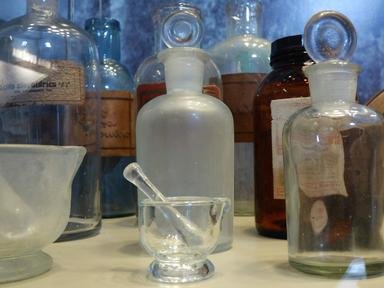Quiz Answer Key and Fun Facts
1. Carbon is 6, calcium is 20, and copper is 29. What does this number represent?
2. Gallium is 30, iron is 1538, and tungsten is 3422 (which is the highest of all of the elements). What does this number measure?
3. Tin has a value of 10, which is the highest of all elements. Technetium and promethium are the only elements with an atomic number 82 or less that have a value of 0. What does this number measure?
4. Aluminum (also spelled aluminium) is 2.7, iron is 7.9, and gold is 19. What does this measure?
5. Hydrogen has a value of 0.15, silicon (second highest) with 27, and oxygen (highest) with 46. What does this number measure?
6. Germanium has a value of 4, francium has a value of 7, and americium also has a value of 7. All known elements have numbers 1 through 7. What does this number represent?
7. Carbon is 6 and oxygen is 8. Seems easy, right? But what if I told you that lead was 126 (not 82)? What do these numbers mean now?
8. Uranium is 140 quadrillion (1.4x10¹⁷), and plutonium is 2.5 quadrillion (2.5x10¹⁵), while darmstadtium is only 10 (that's 10, not 10 quadrillion). Huge difference, right? What does this measure?
9. Nitrogen is 78, oxygen is 21, and argon is 0.93. Out of all of the elements, these are the highest, second highest, and third highest, respectively. What do these numbers represent?
10. The three elements chosen this time will be those with different American and British spellings. Aluminum/aluminium has a value of +3, sulfur/sulphur is -2, and cesium/caesium is +1. What do these numbers represent?
Source: Author
hotdogPi
This quiz was reviewed by FunTrivia editor
rossian before going online.
Any errors found in FunTrivia content are routinely corrected through our feedback system.
